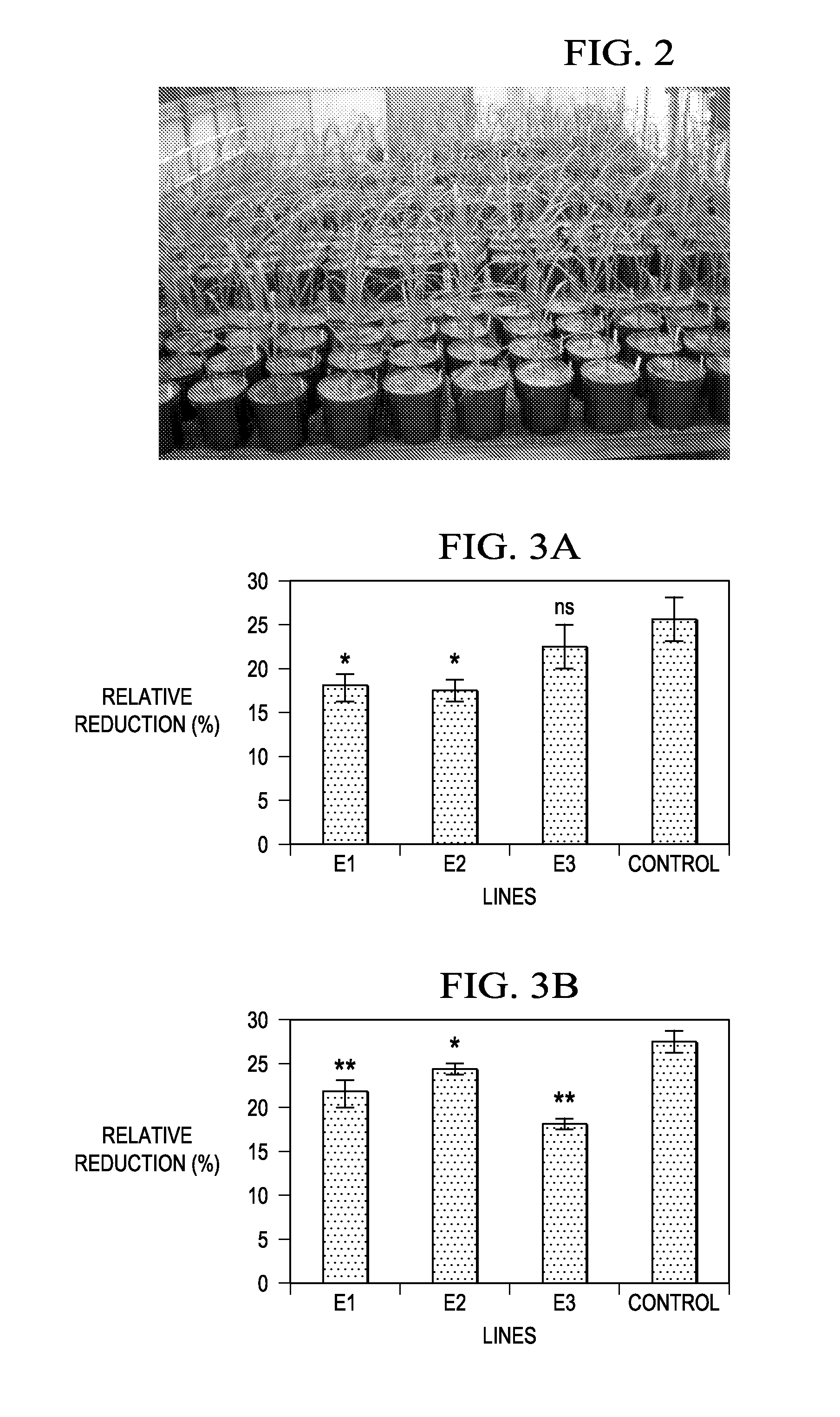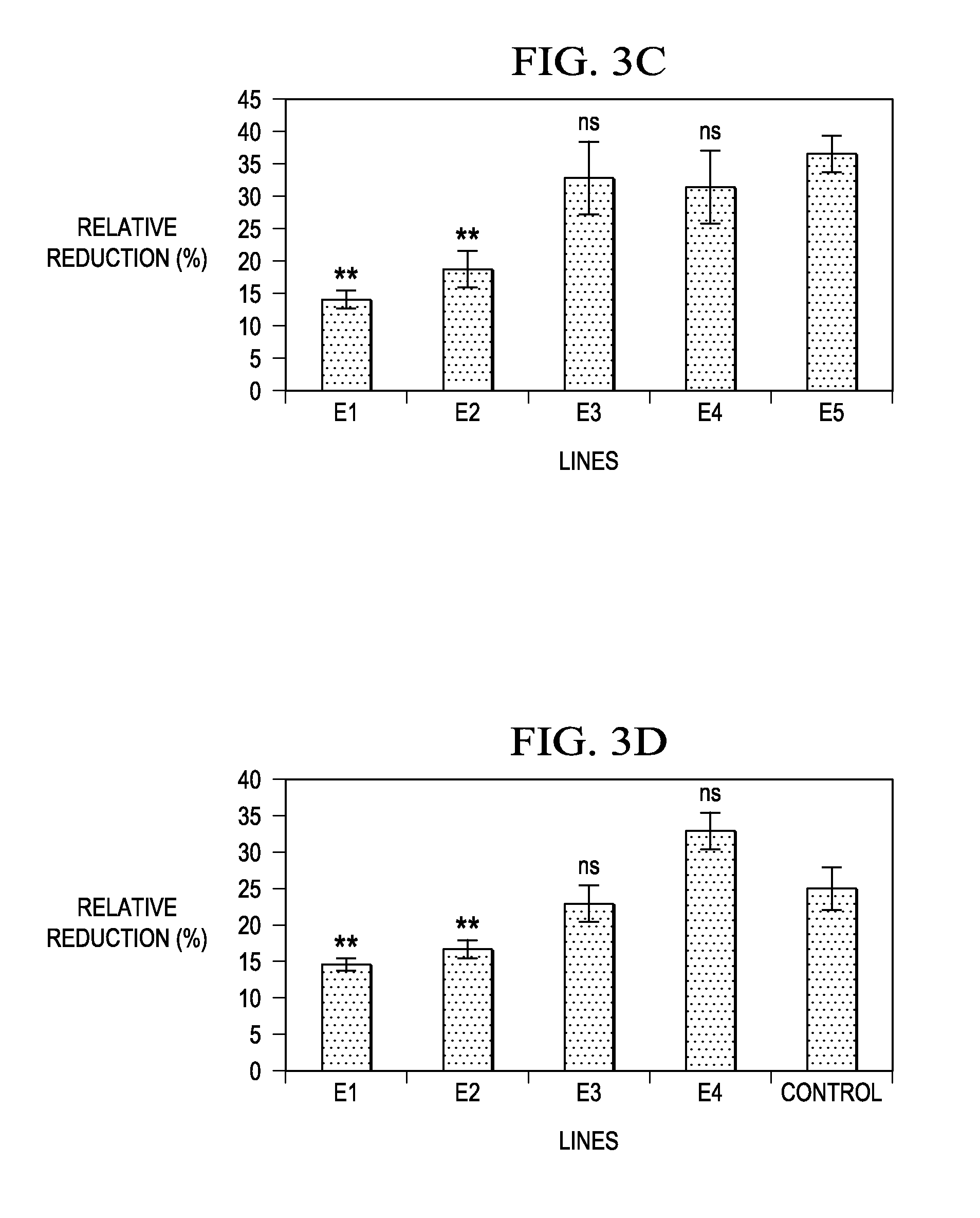Compositions, organisms, systems, and methods for altering cold, drought, and salt tolerance in plants
- Summary
- Abstract
- Description
- Claims
- Application Information
AI Technical Summary
Benefits of technology
Problems solved by technology
Method used
Image
Examples
example 1
Identification of BAG genes in plants
[0086]The trait genes Ced-9 (Cell death abnormal) from Caenorhabditis elegans, AtBAG4 (A. thaliana Bcl-2-associated athanogene), and Bcl-2-161 from humans, belong to the BAG (BCl-2 associated athanogene) gene family. BAG homologs from diverse kingdoms and genera may have low sequence identities and similarities (Elena V. Doukhanina et al., The Journal of Biological Chemistry, Vol. 281, No. 27, 18793-18801). For example, the conserved BAG domain (BD) of the Arabidopsis BAG gene family shares only (13-25%) identity with animal BAG proteins. Therefore, identifying BAG homologs may benefit from search methods such as hidden Markov model (HMM) protein searches and profile-profile alignment algorithms.
[0087]The conserved C-terminal BD domain comprises 3α helices (Elena V. Doukhanina et al., The Journal of Biological Chemistry, Vol. 281, No. 27, 18793-18801). In humans, the second and third a helices directly interact with the ATPase domain of heat-shoc...
example 2
Characterization of Biolistically Transformed Plants: AtBAG4, Ced-9 and Codon optimized AtBAG4+Ced-9 co-transformed lines
[0089]Biolistically transformed plants representing a total of 38 transformation events have been developed and characterized for the co-introduced selectable marker gene (bar) and the trait genes Ced-9 (Cell death abnormal) from Caenorhabditis elegans or AtBAG4 (A. thaliana Bcl-2-associated athanogene). Copy number of insertions and expression level of the transcripts have been determined using Southern and northern blots, respectively, for both trait genes. The determined copy number for trait genes varied from as few as 2 to over 15 copies. Each of these different events displays distinct expression levels of the trait genes and there is no evident relationship between copy number and transgene expression. While each event tends to have a distinct expression level, there are also variations in the expression levels within each event (e.g., FIG. 1A). FIG. 1 illu...
example 3
Abiotic Stress Tolerance: Transgenic Lines
[0091]Primary transgenic plants were propagated for stress experiments by single eye stem cuttings (also called setts) and seedlings (FIG. 2) of the first generation transgenic plants. The propagated transgenic plants were then challenged with drought and cold stresses. Control plants, plants that were not transformed with trait or marker genes, were propagated using the same tissue culture and transformation steps as the transgenic plants. FIG. 2 is a photograph illustrating four-week-old second generation seedlings of transgenic plants expressing the trait genes AtBAG4, Ced-9, and non-transformed controls grown under greenhouse conditions. The transgenic sugarcane plants displayed substantially the same growth performance as corresponding wild-type plants.
PUM
| Property | Measurement | Unit |
|---|---|---|
| Electrical conductance | aaaaa | aaaaa |
| Mass | aaaaa | aaaaa |
| Electrical resistance | aaaaa | aaaaa |
Abstract
Description
Claims
Application Information
 Login to View More
Login to View More - R&D
- Intellectual Property
- Life Sciences
- Materials
- Tech Scout
- Unparalleled Data Quality
- Higher Quality Content
- 60% Fewer Hallucinations
Browse by: Latest US Patents, China's latest patents, Technical Efficacy Thesaurus, Application Domain, Technology Topic, Popular Technical Reports.
© 2025 PatSnap. All rights reserved.Legal|Privacy policy|Modern Slavery Act Transparency Statement|Sitemap|About US| Contact US: help@patsnap.com



